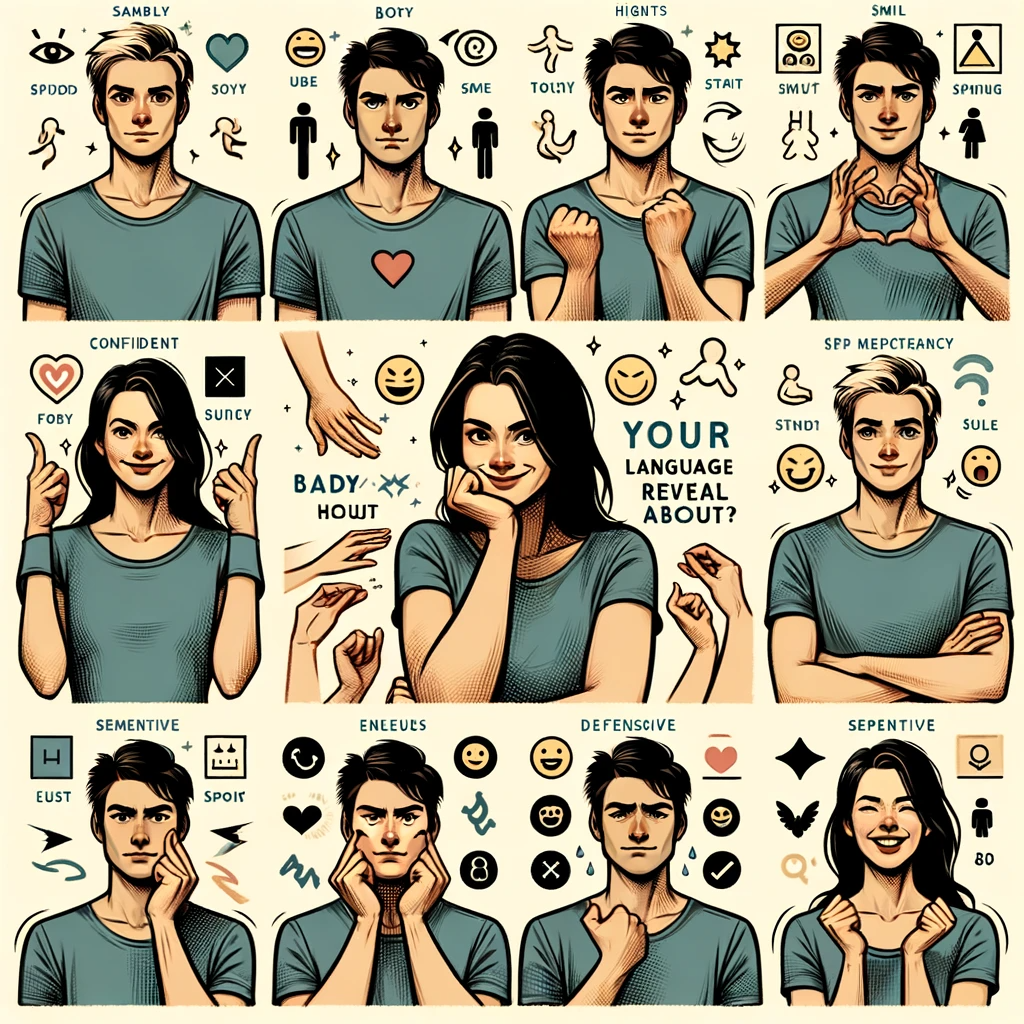 Those darting eyes. That clenched fist. Those folded arms.
Those darting eyes. That clenched fist. Those folded arms.
Did you know your body language is saying much more than the words you’re speaking?
In fact, it comprises 60-70% of your communication, according to body language expert, Kevin Hogan, Psy.D.
So, are you sure you’re sending the right message?
Some body language is positive, and some is negative. Positive body language says things like, “I’m really interested in what you’re saying.” Negative body language conveys things like, “I don’t believe a word you’re saying. Besides, I’m bored.”
The Eyes Have It
Although body language originates in the old brain limbic system and is done unconsciously, you can learn to minimize it with training, according to the web site, www.learnbodylanguage.org.
More research is being conducted into this arena, and you may even remember a TV show from a few years ago, “Lie to Me,” about an investigator that analyzed body language to crack cases.
It’s been said our eyes are the windows of our souls. And they certainly play a big role with our body language.
Check out these indicators:
- Eyes down and to the left – accessing a memory
- Eyes up and to the right – fabricating a story
- Lack of eye contact – evasive
- Unblinking stare – bored
- Lowering the eyes – modesty or submission
- Dilated pupils – sexual arousal
When evaluating someone else’s behavior, be sure to reverse the interpretation for the mirror image effect. And keep an eye out for the following actions.
Other Body Parts
- Touching your face while speaking –rubbing your nose, eyes, ears, head or neck – shows doubt in what you’re saying or hearing
- Hiding your hands or palms – keeping a secret
- Showing your soft wrist underside – flirting
- Finger tapping, scratching and darting eyes – discredit what you’re saying
- Folded arms – guarded
- Mumbling – an unconscious need to avoid being heard
While body language and facial expressions are good indicators of when a person is lying, they’re not foolproof.
So, take these guidelines with a grain of salt and a “heads up warning” that something is not quite right about what the person is saying.
When most normal people are lying, they show signs of stress in their posture, movements and facial expressions.
However, their stress may not show up if the person really wishes the facts were as described – or if they can rationalize their story really should be as described.
People who are lying will often delay answering a question for a few seconds. Truthful answers come sooner.
Face to Face
Here’s what to watch out for when a person is lying to you when face-to-face:
- Eye contact is broken
- Body and face become stiffer
- Shoulders are pulled up and elbows are pulled into sides
- Forehead tightens
- Nostrils flare
- Blinking is increased
- Eyes go to the right
- Tone flattens or becomes monotonous
- Stuttering or mispronunciations occur
- Hand-to-face touching increases – especially nose rubbing and mouth covering
- Objects may be placed between you – cups, keys, pencils – as defensive postures
Types of Lies
Keep in mind that everyone tells “little fibs” occasionally.
That’s what we call lying when it serves us. In some cases we lie to protect a person’s feelings – or to avoid doing something we don’t want to do.
Several types of lies have been identified by researcher Joseph Teece of Boston College:
- Protective lie – shields liar from danger
- Heroic lie – protects someone else from danger
- Ego lie – prevents embarrassment
- Gainful lie – enriches the liar
- Malicious lie – hurts someone
Pay Attention to Cues
With a caution toward stereotyping, research shows men often lie to make themselves look good and increase their status, while women often lie to make others feel good, thereby enhancing their relationships.
Another thing to watch for to detect lying is a sudden change in movements.
The liar tends to shut down and tries to maintain control of the situation. In so doing, he or she may become quieter and stop normal body movements until you have accepted the lie.
Tension is high in liars, so they need some self-comforting. They stroke their hair and touch their face more frequently.
While scratching and rubbing their nose is common, don’t accuse all nose rubbers of being liars.
Lie Detectors
The best overall liar detection clue is a sudden change in posture and movements from the normal patterns for a short time until you have accepted what is said.
If you believe someone is lying, change the subject quickly and watch their reactions.
A liar will follow along willingly and become more relaxed. Guilty people want the subject to be changed, while an innocent person may be confused by the sudden change and want to go back to the previous subject.
Why Lie?
So, why do we lie in the first place?
David Livingstone Smith, author of The Evolutionary Roots of Deception and the Unconscious Mind,” believes lying is deeply embedded in our subconscious as a result of evolution.
Our ancestors who survived by lying passed on stronger and stronger genes in each generation for this trait.
Yikes – are we talking “Survival of the Most Deceptive?”
Giveaway signs that a person is uncomfortable include upper body rocking, leg swinging or finger or foot tapping.
These movements are among the first signals of tension. If the stress escalates, these could turn into intermittent closing of the eyes, a slight tucking of the chin into the chest and shoulder hunching to appear smaller.
Smiley Faces
How can you tell a real smile from a fake smile?
First of all, real smiles are normally symmetrical, and real smile muscles only fire for about five seconds. Fake smiles can last much longer.
Also, you can tell a real smile because the person appears to be smiling from their eyes – with little upturned wrinkles in the corners of the eyes. A polite, fake smile doesn’t have the eye wrinkles.
Having Fun With Body Language
The bottom line is that our body language cues are generally recognized unconsciously because we all have them in our DNA.
Emotions are normal, and displaying them is healthy. So, don’t overthink this.
Just be on the lookout if you sense someone is not being truthful with you. And notice if you’re giving out any of these cues.
If the interpretation doesn’t make sense, maybe it’s something to examine on a subconscious level. Or, it could just be a nervous habit.
Have some fun with this. You may get skillful at “reading situations.”
And you’ll definitely learn some things about yourself – and others!


